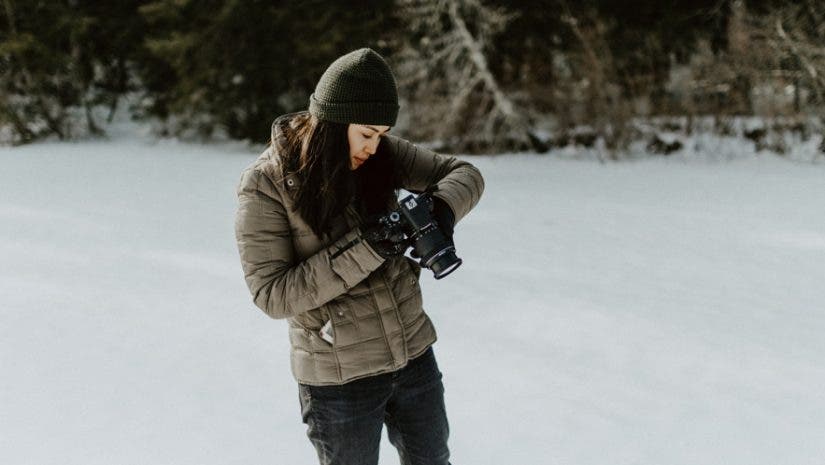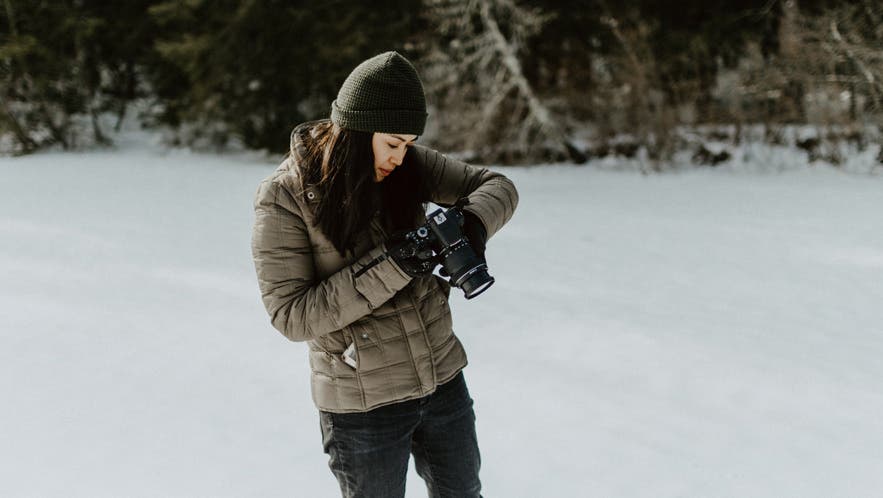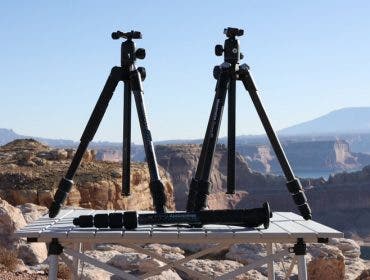The winter season is here, and while this season may bring a lot of positive opportunities, it can also come with its own set of challenges. Winter photography — and cold weather photography — can be incredibly rewarding if you know how to avoid the mistakes and pitfalls that can lead to an unpleasant or frustrating experience.
To get you prepared for the lower temperatures, here are eight helpful tips, tricks, and gear recommendations that make shooting in colder weather easy:
1. Wear gloves
We’ve all thought this in the past. “It’s only ___ degrees, I don’t think I’ll need gloves.” Those are the famous last words that can end a photographer’s quest for winter photos quickly.
You see, fully-functioning fingers are incredibly important when using your camera, and they’re also the body part that loses warmth and circulation the quickest. If you’re shooting outside in the winter, be sure to pack a pair of warm, insulated gloves. Preferably, you have gloves that offer touchscreen functionality or removable fingers for quick and easy operation of your camera.
Trust me, nothing is worse than losing feeling in your fingers while shooting — which is also the first sign of frostbite. Pack a warm pair of gloves and your fingers will thank you for years to come.
Here are great options:
- Freehands Stretch Thinsulate Gloves ()
- PGYTECH Photography Gloves ()
- RucPac Professional Tech Gloves for Photographers ()
2. Dress for your time outdoors
Again, if you plan on shooting outside, always plan and dress for hours in cold weather. That includes gloves, a warm hat, and lots of layers.
If you’re in an environment where there could be lots of wintry weather in the forecast, practice this layering system: baselayer, midlayer(s), and an outer shell. A baselayer should be something that is snug, lightweight, and warm and made of a warm, moisture-wicking material. Midlayers can be anything from a fleece or insulated jacket, like goose down or synthetic insulation. Finally, your outer shell should be weatherproof and be able to block elements like wind, rain, sleet, and snow. It should also have enough space to provide natural movement in a layering system.
Now, this layering system might seem extreme, but it’s proven to work in any cold-weather environment. It’s been helpful whether you’re in the backcountry or New York City. Your biggest enemy in winter is moisture, and having layers that wick and keep moisture out will do you wonders in the wintertime.
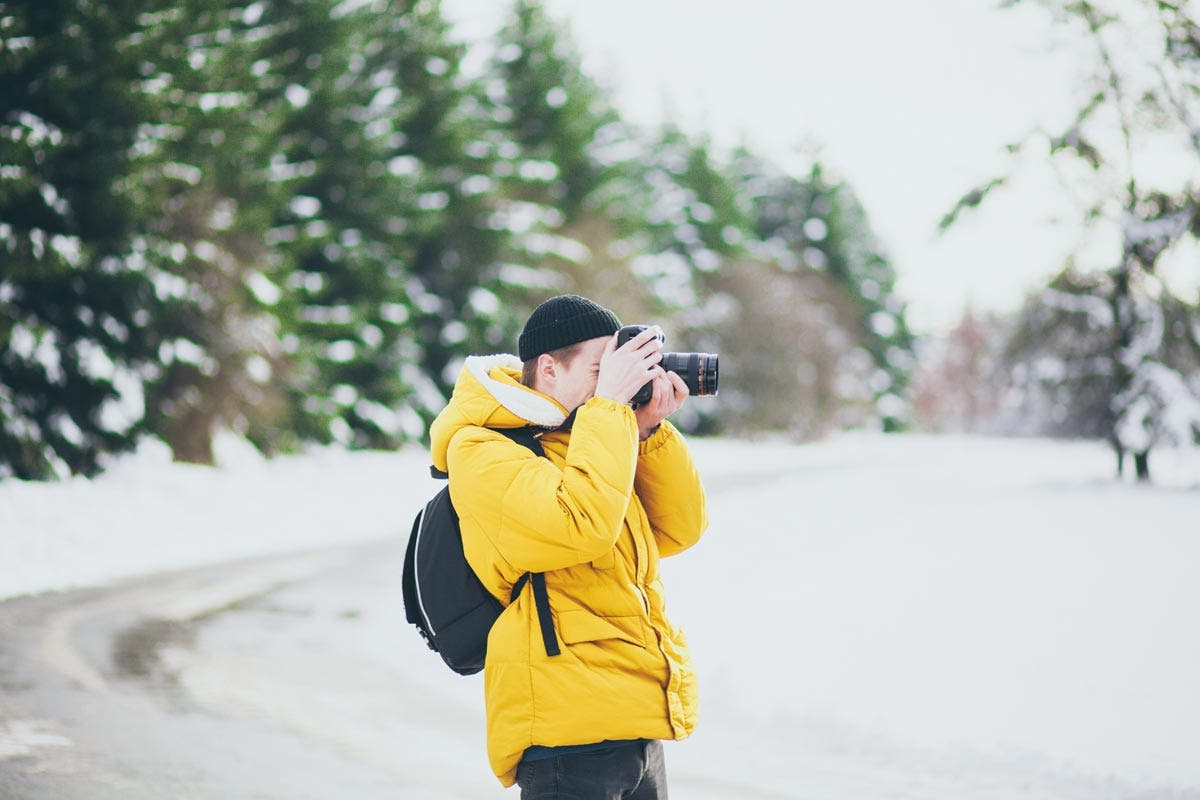
3. Use a weather-ready camera bag or backpack
Your camera equipment is your most valuable asset, and in the winter, it especially needs extra protection. Carrying your camera bodies, lenses, and accessories in a waterproof and durable camera bag or backpack is super important. These are just some of the must-have tools for outdoor photography.
Before you purchase a bag or pack, be sure to read up on the outer material first, especially if you plan to shoot a lot outdoors. A rain fly or cover is nice, but you really need an outer bag shell that is durable and weather-resistant, at the very least.
Look for materials like tarpauline or nylon ripstop with weather-resistant linings that add even further protection and allow you access your gear easily without fumbling with a rain fly.
Here are some fantastic bag and backpack options for your next cold-weather excursion:
4. Bring the batteries
You probably know this already, but your batteries and cold weather are like oil and water: they don’t mix well. It’s important when shooting in the winter to always bring more than enough camera batteries and chargers. No matter how great your batteries are in regular temperatures, they will struggle in the winter months.
Nothing is worse than running out of batteries in the field, so be prepared and always carry multiple batteries in your pack when shooting in colder weather.
Shop our entire line of batteries here.
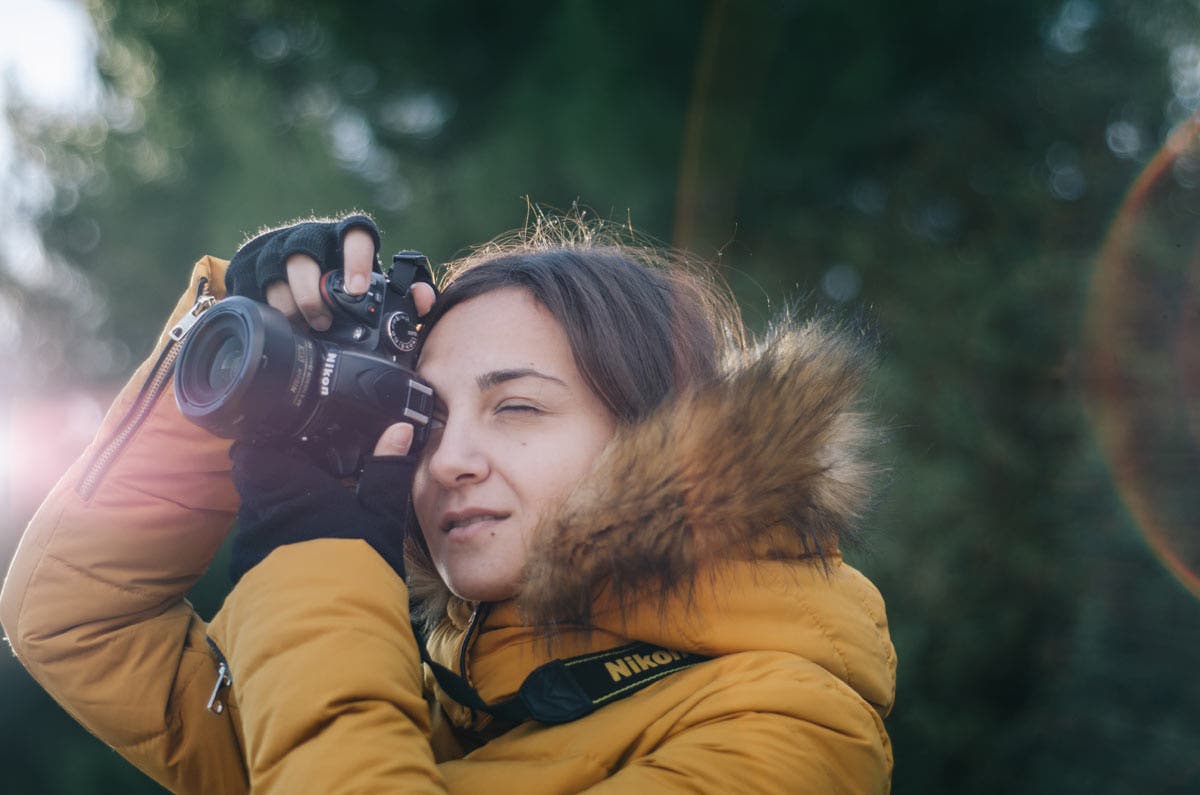
5. Invest in a battery grip
Alongside the battery life, an important camera accessory to invest in is a battery grip. Not only can battery grips double your battery life, since they can fit two batteries into your camera instead of one, but they can sometimes improve your camera’s speed and frames per second rate.
Finally, as their name suggests, battery grips offer additional grip on your camera when shooting from vertical to horizontal. This is especially helpful in wintery conditions when you might need the extra control. They’re a fantastic accessory to own in any season, but especially in the colder ones.
Shop our entire lineup of battery grips here.
6. Pack a dry bag or plastic bags
As mentioned above, moisture in the winter is your worst enemy, and that especially goes for your camera gear. If you’re fluctuating from cold to warm environments — like from shooting outside to spending time at a coffee shop to edit photos — condensation and moisture can build up on your lenses and camera gear and wreak havoc.
Packing a waterproof dry bag or plastic bags from home to wrap around your gear after use can help add an additional layer of protection. They can also be a shield against moisture that can cause problems for your gear in the wintertime.
Shop the Leupold Go Dry 2 Litre Gear Bag here.
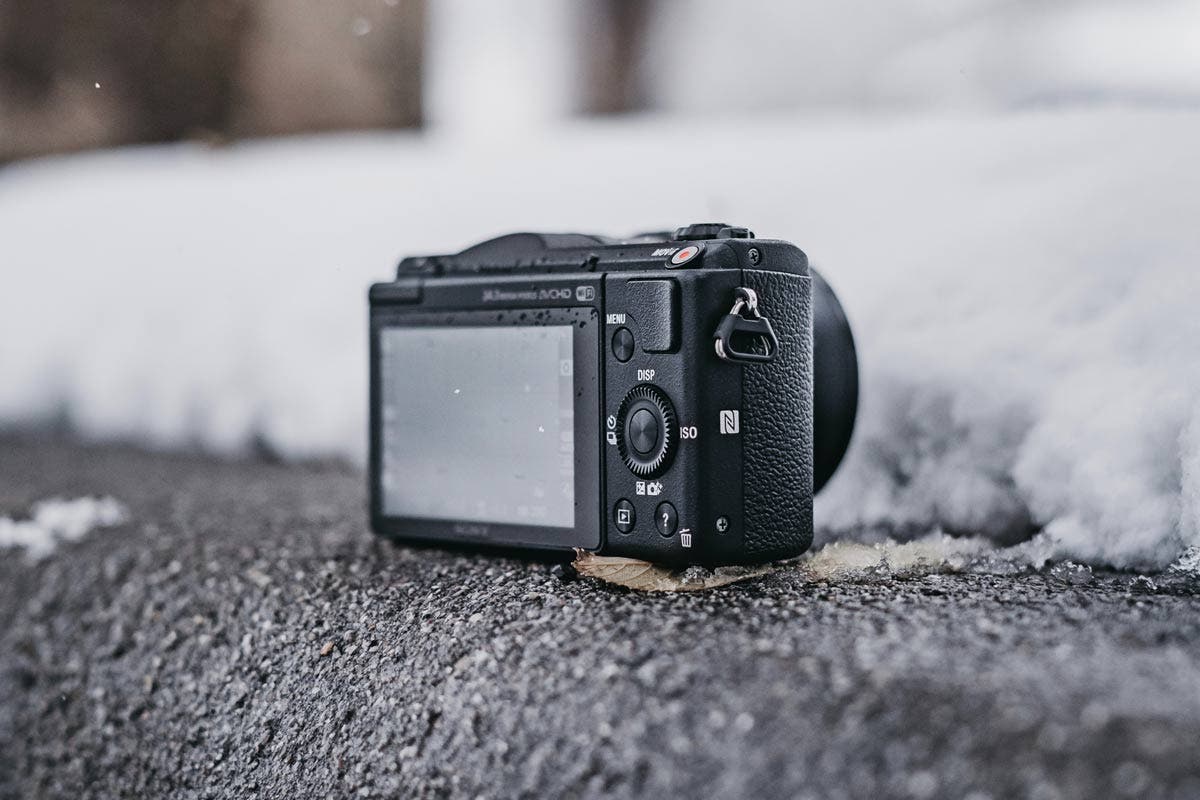
7. Invest in weather-resistant memory cards
Not all memory cards are created equal, and you can find that out very quickly in colder weather. You need to bring along weather-resistant memory cards built to withstand winter temperatures, or you could be in for a rude awakening.
Don’t ruin your shoot with a compromised memory card due to the winter elements. Invest in a few durable memory cards built for colder, more extreme environments. Look for memory cards that are weather-resistant, can handle cold or hot climates, and are also shock- or drop-resistant.
Here are some great options:
8. Bring the right filters
Finally, let’s talk about filters in colder weather and winter environments, and check out our guide to the filters you need for landscape photography. Typically, winter can provide two main challenges: lack of color and contrast and strong UV influence due to sunlight reflecting off the snow onto your lens.
There are two filters that can help with these challenges: a circular polarizer filter and a UV filter. Using a circular polarizer filter can provide additional color and contrast by making limited tones and colors pop even more. Using a UV filter can help block and eliminate harsh ultraviolet rays, especially on a bright, sunny, wintery day.
Both filters are incredibly important in colder, wintry conditions, and should be added to your camera kit when you go out to shoot this winter.
Shop circular polarizers and UV filters at Adorama.
Ready to head out into the great winter wonderland? Follow these 7 Things You Need to Know About Taking Photos in the Snow & Rain for more ideas!
Feature photo by Kelly Sikkema on Unsplash
